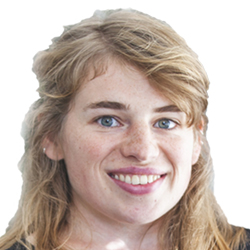Speaker Bio & Abstract

Satelligence
The Netherlands
BiographyLoes Masselink finished her MSc in International Land and Water Management at Wageningen University where she focused on land degradation and remote sensing. Now at Satelligence, she works as a remote sensing analist and manages client relations in West Africa. She regularly works with the open-source tool Classifier, developed at Satelligence, e.g for classifying areas with cocoa, oil palm and other commodities.AbstractRens Masselink, Arjen Vrielink, Loes Masselink | Satelligence
In recent years, large amounts of open satellite data have become available. Satelligence uses these data to identify sustainability risks in commodity supply chains, help farmers increase yields and get access to finance.
For creating our products, such as deforestation detection, anomaly detection in crops, growth stage estimation and yield prediction, we developed a Distributed Processing Framework, which is deployed in a Kubernetes cluster. This set-up allows effortless scaling-up processing tasks. Our open-source 'Classifier' tool for land cover classification and object detection is integrated into this framework.
Classifier is a multi-purpose classification tool that can do standard land cover classifications using (un)supervised algorithms like Random Forest,Gradient Boosting and K-means clustering. Additionally, Classifier does image segmentation for object-based classification and object detection. Classifier is built on top of open-source libraries like scikit-learn, XGBoost, RSGISLib and Raster Vision that provide these functionalities. Classifier runs in a container, making it cross-platform and cloud ready.
We developed Classifier to give non-programmers a tool that is easy to use, cloud ready and able to handle Terabytes of data. We will show how to use Classifier for land cover classifications, segmentation and object-detection algorithms for various areas around the world.